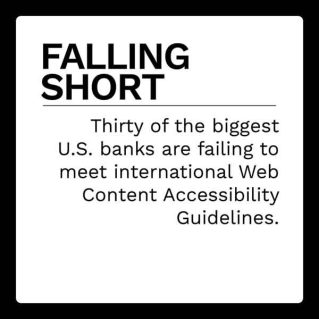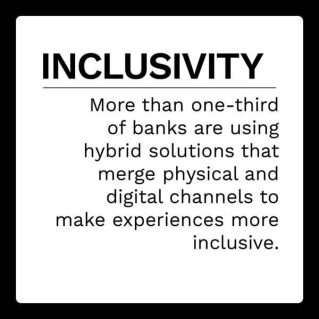Why Digital-First Banking Must Also Be Accessible

As financial institutions (FIs) take on the accelerated digital transformation that has accompanied the pandemic, the importance of ensuring accessibility for all customers has been thrown into stark relief. Most customers consider mobile banking indispensable after months of social distancing, and reliance on physical banking is declining. Those with physical and cognitive impairments, however, may not be able to swap to digital banking so easily if their FI is not ensuring full accessibility.
For FIs, there are multiple incentives to ensure their products and services are accessib le to all customers. Not only does it enable customers with impairments to make full use of all their FI has to offer, but it also ensures that those who have relatives or other loved ones with disabilities will see their FI as a valued banking partner. Ensuring full accessibility also helps brand an FI as socially responsible, which increases the brand’s appeal to all customers.
le to all customers. Not only does it enable customers with impairments to make full use of all their FI has to offer, but it also ensures that those who have relatives or other loved ones with disabilities will see their FI as a valued banking partner. Ensuring full accessibility also helps brand an FI as socially responsible, which increases the brand’s appeal to all customers.
In this month’s Digital-First Banking Tracker®, PYMNTS explores how banks can meet digital accessibility standards and gain long-term loyalty.
Around the Digital Banking Space
Since the start of the pandemic, 20% of United Kingdom banking customers have not set foot inside a physical branch. Others have gone months or longer without a branch visit, and in November 2021, just 13% had been inside a branch in the previous week. At the same time, 736 physical branch locations closed across the U.K. in 2021, and the total number of physical branches in the nation has fallen by half since 2015. FIs are finding innovative solutions to still offer customers physical banking access, from partnering with other banks to creating banking hubs with multiple FIs offering services and products from a single location.
While customers increasingly prefer digital banking channels, some products require physical interactions or direct banking assistance. Some customers simply feel b etter having a face-to-face conversation for certain products and services. As such, FIs need to continue to create strong omnichannel solutions that continue to innovate and improve physical banking channels, even as they accelerate digital deployments. The digital transformation has boosted competition for banking primacy with customers, and having a good omnichannel experience may offer incentives for customers to choose a bank they can physically interact with, rather than switching to a FI they can have just a digital relationship with.
etter having a face-to-face conversation for certain products and services. As such, FIs need to continue to create strong omnichannel solutions that continue to innovate and improve physical banking channels, even as they accelerate digital deployments. The digital transformation has boosted competition for banking primacy with customers, and having a good omnichannel experience may offer incentives for customers to choose a bank they can physically interact with, rather than switching to a FI they can have just a digital relationship with.
For more on these stories and other digital-first banking developments, check out the Tracker’s News and Trends section.
Truist on Offering Digital Accessibility for All
Having accessible banking channels is no different from having a usable banking channel — it just involves taking a wider view of what makes a channel usable for customers. In this month’s Feature Story, Miranda Capra, director of inclusive design at Truist, talks about the steps involved in promoting accessibility as a basic building block that persists through all banking channels, as well as some of the benefits FIs realize by ensuring their teams are trained and knowledgeable in building accessible products and services.
PYMNTS Intelligence: Keeping the Digital Transformation Accessible to All Customers
While most banking customers are relying more and more on digital banking, some of the most vulnerable populations continue to favor physical banking channels. In order to ensure those customers are not left behind by digital transformations, FIs will need to offer digital channels that fully comply with the best standards and practices for accessibility. They will also need to maintain and innovate in regards to the alternative channels that disabled customers depend on.
the most vulnerable populations continue to favor physical banking channels. In order to ensure those customers are not left behind by digital transformations, FIs will need to offer digital channels that fully comply with the best standards and practices for accessibility. They will also need to maintain and innovate in regards to the alternative channels that disabled customers depend on.
To learn how FIs can maintain primacy with disabled customers and build their brand reputations as socially responsible by staying ahead of the regulatory curve, check out this month’s PYMNTS Intelligence section.
About the Tracker
The Digital-First Banking Tracker®, a PYMNTS and NCR collaboration, examines the latest trends and developments
